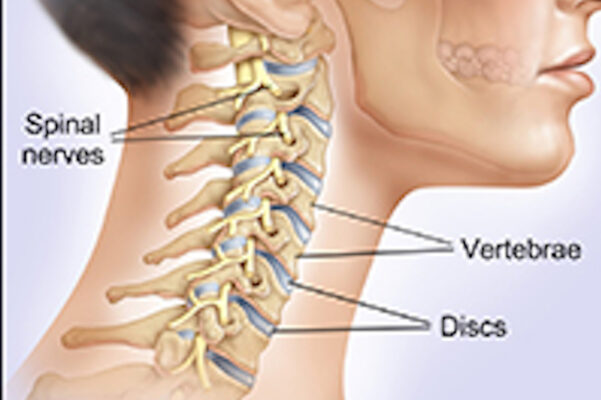Cervical stenosis
This is caused when the spinal canal in the neck region is narrowed due to degenerative changes or trauma. If the space within the spinal canal is constricted it may cause compression of the spinal cord with resulting neurological symptoms, a condition called myelopathy.
This condition can result in a variety of serious symptoms anywhere in the body-
Signs and symptoms
1. Neck pain
2. Numbness and tingling in arms and or legs
3. Weakness in arms or legs
4. Loss of coordination in one or more limbs and loss of balance
5. In severe cases loss of control of bodily functions.
The natural ageing process causes the discs between the vertebrae to lose hydration and shrink, making them smaller and flatter and then these discs may bulge into the spinal canal. The small facet joints also degenerate over time and become enlarged with changes from arthritis and the growth of bony spurs. The result of both of these types of degeneration, is less room in the spinal canal, or spinal stenosis. Degeneration is generally slow as you age but can be accelerated by an injury or fall.
If the compression is severe the symptoms can cause myelopathy.
Cervical stenosis with myelopathy
In these cases the problem tends to get worse slowly over time but in some cases can rapidly worsen. Early symptoms are weakness and numbness in the arms or legs, problems with coordination of fine motor skills and there may be balance issues. These symptoms should be investigated before they get any more severe.
Most cases of myelopathy will require an operation to relieve pressure on the spinal cord. In rare cases, symptoms of myelopathy are mild enough so that nonsurgical treatments are recommended. However, because of the risk of severe nerve damage, most surgeons will recommend an operation to relieve pressure on the spinal cord.
Sources- spine-health.com
Mayo clinic

